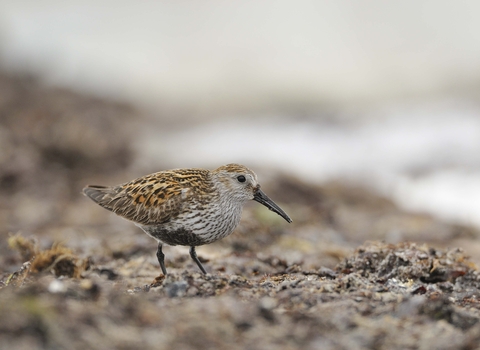
©Fergus Gill/2020VISION

©David Tipling/2020VISION
Dunlin
Found along the coast all year-round, the dunlin is a small sandpiper that breeds and winters in the UK. It can be seen in its upland breeding grounds in summer, when it turns brick-red above and sports a black patch on its belly.
Scientific name
Calidris alpinaWhen to see
January to DecemberSpecies information
Statistics
Length: 16-22cmWingspan: 40cm
Weight: 48g
Average lifespan: 5 years
Classified in the UK as Red under the Birds of Conservation Concern 5: the Red List for Birds (2021).
